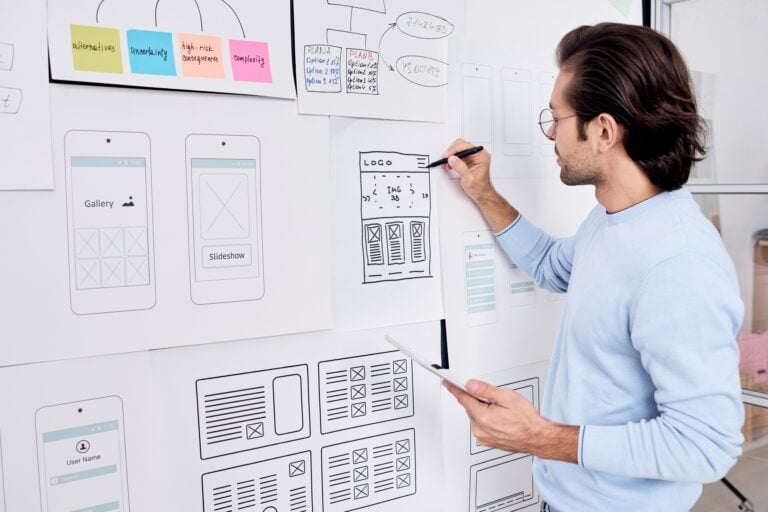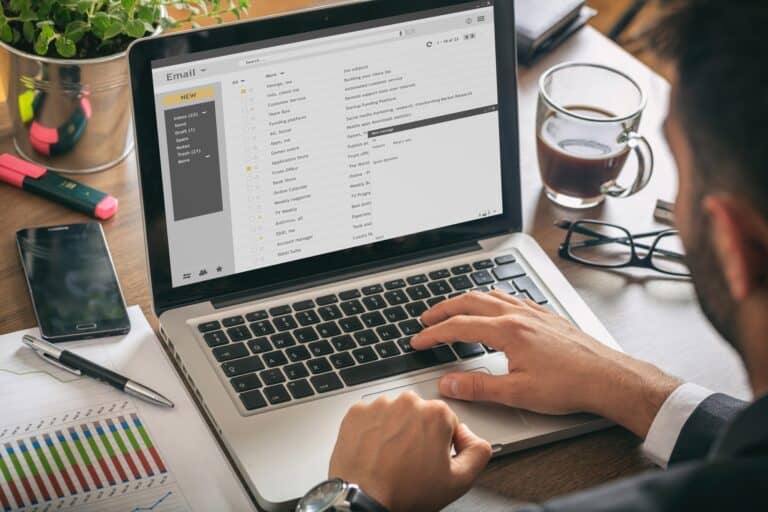How to Design Beautiful Emails That Get Opened and Clicked
Introduction: Beyond the Text – Making Your Emails Pop
In a crowded inbox, most emails get skimmed, deleted, or worse, sent straight to the spam folder without a second glance. You’re not just competing for attention; you’re fighting for it. While compelling subject lines and valuable content are non-negotiable, there’s another crucial element that silently screams “Open Me!” or “Click Here!”: the visual appeal of your email. We’re talking about design.
At emailbeginner.com, we believe that you don’t need to be a professional designer to create stunning emails that capture attention and get results. It’s about understanding a few key principles and leveraging the right tools. This guide will walk you through the essentials of designing beautiful emails that not only look good but actually get opened, clicked, and convert your subscribers into loyal customers or engaged readers. Let’s make your emails truly pop in that crowded inbox.
Why It Matters: Visuals Are Your First Impression

Think about how you browse online. What grabs your eye first? Usually, it’s something visual. The same goes for email. Before a single word is read, your email’s design makes an instant impression. That impression dictates whether a subscriber continues reading or hits delete.
Here’s why great email design isn’t just a nicety; it’s a necessity:
- First Impressions Count: A visually appealing email screams professionalism and trustworthiness. A cluttered, ugly, or outdated design, conversely, can make your brand look unprofessional, even if your content is gold. You’ve got mere seconds to make a good one.
- Boosts Engagement: Well-designed emails are more inviting to read. Clear layouts, striking imagery, and well-placed calls to action guide the reader’s eye, encouraging them to scroll, read, and click.
- Enhances Brand Identity: Consistent design elements (colors, fonts, logos) reinforce your brand. Every email becomes an extension of your website and overall identity, building recognition and loyalty.
- Improves Readability: Good design breaks up text, uses whitespace effectively, and employs readable fonts, making long emails less daunting and easier to digest on any device.
- Increases Conversions: Ultimately, clear, well-designed emails with prominent calls to action lead to higher click-through rates (CTRs) and conversion rates. When users know what to do and where to click, they’re more likely to do it.
- Avoids Spam Filters (Indirectly): While design isn’t a direct spam filter trigger, professional-looking emails with balanced image-to-text ratios and clean HTML are less likely to be flagged as suspicious than poorly coded or overly promotional-looking messages.
emailbeginner.com was built to help users like you make smarter decisions with confidence. And designing effective emails is a skill that directly translates to more engagement and better results.
The Essentials: How to Design Emails That Convert
You don’t need a degree in graphic design, or expensive software like Photoshop. Many email marketing platforms offer drag-and-drop builders and templates that do most of the heavy lifting. The key is to understand the principles behind effective email design.
1. Keep it Clean and Simple
Clutter is the enemy of conversions. A busy email overwhelms readers and makes your message hard to digest.
- Whitespace is Your Friend: Don’t fill every inch of space. Leave ample breathing room around text, images, and buttons. This makes your email look professional and easy on the eyes.
- One Primary Goal Per Email: While you might have multiple pieces of content, each email should generally have one main purpose (e.g., promote a new blog post, announce a sale, deliver a lead magnet). Design to support that single goal.
- Minimalism Often Wins: A clean, minimalist design often communicates sophistication and confidence. Don’t use ten fonts when two will do.
2. Prioritize Mobile-Responsiveness
Most people check their email on a smartphone. If your email looks broken or requires horizontal scrolling on a phone, you’ve lost them.
- Automatic Adjustment: Your email marketing platform’s templates should automatically adjust to different screen sizes. Test your emails on various devices (your own phone, a friend’s tablet, etc.) before sending.
- Single-Column Layouts: These typically work best for mobile. Avoid complex multi-column layouts that break easily on smaller screens.
- Large, Tappable Buttons: Buttons should be big enough to easily tap with a thumb, not tiny text links. Ensure they have enough padding around them.
3. Compelling Visuals (But Not Too Many)
Images, GIFs, and even short videos can grab attention, but use them wisely.
- High-Quality Images: Blurry or pixelated images scream amateur. Invest in good stock photos, or use your own professional shots.
- Relevance: Every image should serve a purpose and directly relate to your message. Don’t use images just for decoration.
- Balance Text and Images: Don’t make your email a giant image. Email services and spam filters look for a healthy balance of text and images. Too many images, or a single large image with little text, can get you flagged. A good rule of thumb is 60/40 text-to-image ratio.
- Alt Text: Always add descriptive alt text to your images. This helps screen readers for visually impaired users, and it displays if images don’t load.
4. Readable Fonts and Consistent Typography
Your text needs to be easy to read and reflect your brand.
- Choose Legible Fonts: Stick to standard, web-safe fonts that display well across all devices and email clients. Serif fonts (like Georgia, Times New Roman) can be good for body text, while sans-serif (like Arial, Helvetica) are often preferred for headlines. Don’t go crazy with novelty fonts.
- Sufficient Font Size: For body text, aim for 14-16px. For headlines, ensure they’re large enough to stand out without being obnoxious.
- Line Height & Spacing: Give your text some breathing room with adequate line height (space between lines of text) and paragraph spacing. This improves readability.
- Consistent Hierarchy: Use a consistent hierarchy of headings (H1, H2, H3, H4 in your articles) to break up content and guide the reader’s eye. Don’t just pick ’em randomly.
5. Clear Calls to Action (CTAs)
This is where you tell your readers what to do next. Make it impossible to miss.
- Prominent Buttons: Use large, contrasting buttons for your primary CTA. They should stand out from the rest of the email.
- Action-Oriented Text: Use strong verbs: “Shop Now,” “Download Your Guide,” “Learn More,” “Register Here.”
- Strategic Placement: Place CTAs both above the fold (visible without scrolling) and throughout the email, especially near relevant content. Don’t make people hunt for ’em.
- White Space Around CTAs: Give your buttons plenty of space so they don’t get lost in the surrounding text or images.
6. Branding Consistency
Your emails are a direct extension of your brand. They should feel familiar to someone who’s visited your website or social media.
- Logo Placement: Include your logo prominently, usually at the top of the email.
- Brand Colors: Use your brand’s primary and secondary colors consistently in buttons, headers, and accents.
- Tone of Voice: Maintain your brand’s unique voice throughout your email copy.
Tools That Simplify Beautiful Email Design for Beginners
You don’t need to learn HTML or CSS to create stunning emails. Modern email marketing platforms offer powerful drag-and-drop builders that make design accessible to everyone.
- Flodesk: This platform is specifically designed for creators who want to send “stunning emails without the complexity.” It excels at visual design, offering beautiful templates and an intuitive drag-and-drop editor that makes creating gorgeous emails incredibly easy. Our Flodesk Review: Send Stunning Emails Without the Complexity dives into its unique features.
- AWeber: As we discussed in our AWeber Review for Beginners, this veteran platform also offers a user-friendly drag-and-drop builder and a wide selection of templates.
- ConvertKit: While known for its creator-focused segmentation, ConvertKit also offers a clean email editor with visually appealing templates, especially for those who prefer simpler, more personal-feeling emails. You can check out our ConvertKit Review for more details.
These tools handle the technical stuff, letting you focus on the creative side. They ensure your emails are responsive, load fast, and look great on any device.
Pro Tips for Email Design Success
- Test, Test, Test: Always send a test email to yourself (and maybe a few friends on different devices) before sending to your whole list. Check how it looks on various email clients (Gmail, Outlook, Apple Mail) and devices (phone, tablet, desktop). You’ll usually spot a weird formatting error this way.
- Preview Text: Optimize your preview text (the short snippet that appears next to your subject line in the inbox). This is a crucial element that can entice opens.
- Personalize Strategically: While design is key, personalization (using subscriber names, recommending relevant products) makes your design even more powerful.
- Monitor Your Metrics: Keep an eye on your open rates and click-through rates. If they’re low, it might be a sign that your design isn’t engaging enough, or your subject lines are weak.
Designing beautiful emails isn’t about being an artist; it’s about strategic visual communication. By keeping it simple, mobile-friendly, visually appealing, and action-oriented, you’ll create emails that don’t just look good but actually drive results for your business. It’s how you stand out in a crowded inbox and build a loyal audience.
FAQs
Does email design affect deliverability?
Yes, email design can indirectly affect deliverability. Overly image-heavy emails with little text, poorly coded HTML, excessive fonts, or very large file sizes can sometimes trigger spam filters. A balanced, clean design with valid code generally helps avoid deliverability issues.
What is “above the fold” in email design?
“Above the fold” in email design refers to the content that is visible to the recipient without them having to scroll down. It’s crucial to place your most important message, a compelling visual, and a clear call to action “above the fold” to immediately capture attention and encourage engagement.
Should I use stock photos or custom images in my emails?
Both stock photos and custom images can be used effectively. Stock photos are convenient and often high quality. Custom images (e.g., photos of your product, behind-the-scenes glimpses, original graphics) can enhance authenticity and uniqueness, making your emails feel more personal and branded.
How important is accessibility in email design?
Accessibility is very important in email design, ensuring your emails can be read and understood by people with disabilities (e.g., visual impairments, cognitive disabilities). This includes using sufficient color contrast, providing alt text for images, using clear headings, and designing for keyboard navigation. Many email platforms offer accessibility checkers.
What are dynamic content blocks in email design?
Dynamic content blocks are sections within an email that change based on specific subscriber data or segmentation rules. For example, a dynamic content block might display a different product recommendation based on a subscriber’s purchase history, or show a different banner image based on their geographic location. This enhances personalization.
Written by The Editorial Team. Learn how we write and test all our content for accuracy.






